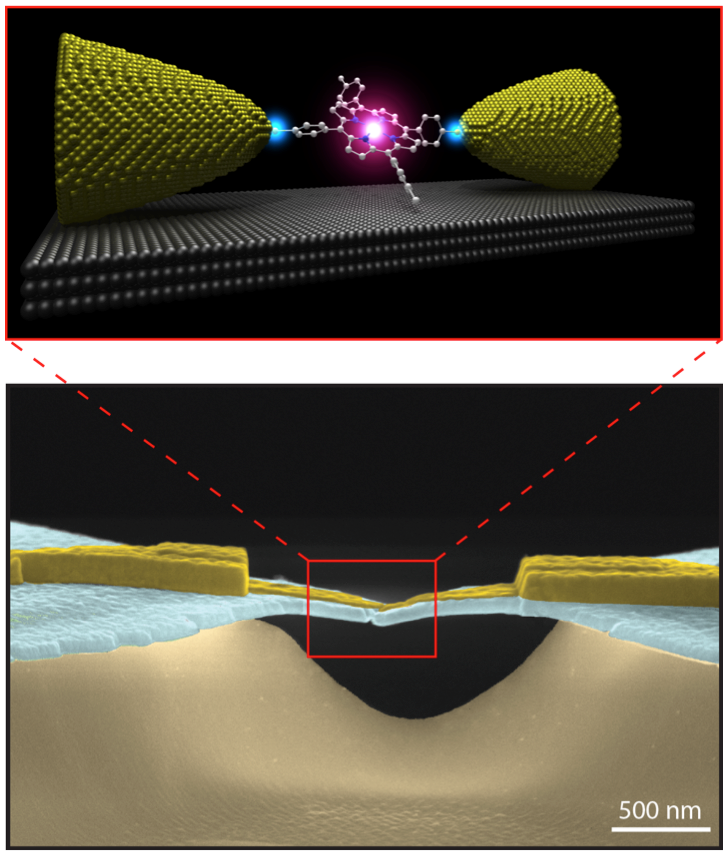Check out this paper by Michael Perrin and coworkers published in Nature Nanotechnology, titled Large tunable image-charge effects in single-molecule junctions!
Effect of image-charges on electron transport better understood
Molecules are very small and typically just several nanometres in size. A single molecule between two electrodes could be used as an electronic device, such as a highly sensitive sensor or extremely small transistor. However, the problem in developing these ‘molecular electronics’ is that it is difficult to send a current through a single molecule. PhD student Mickael Perrin from the Kavli Institute, working in the group of van der Zant has discovered an effect that plays a major role in this: so-called ‘image-charges’ in the metal contacts can strongly enhance electron transport through the molecule. The results have been obtained in collaboration with the van Esch group from the chemical engineering department and the van Ruitenbeek group in Leiden. They were published in the April issue of Nature Nanotechnology.
Image-charges occur in a metal due to the proximity of charge, such as that on the single molecule. The image-charges in the metal in turn influence the energy levels of the molecule. It was already known that image-charges play an important role in charge transport through molecules, but for the first time the researchers have systematically described this effect for a single molecule. This was achieved using gated mechanically controllable break junctions, in which a molecule bridges two thin suspended gold electrodes. The technique makes it possible to vary the distance between the electrodes with picometer precision and this allowed them to experimentally determine and quantify the important role of the image-charges.

